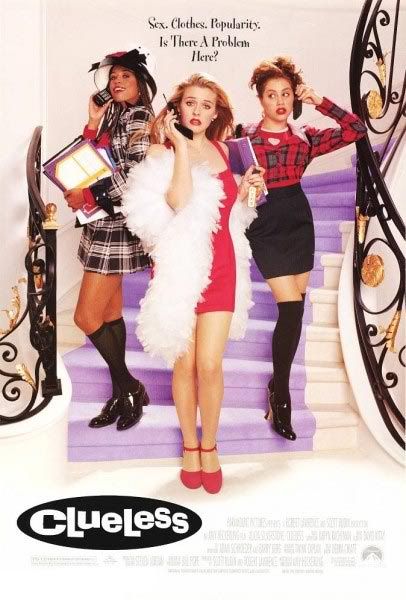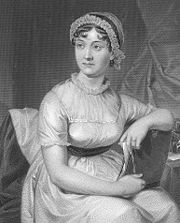I initiated my Author Centred Response with an introduction to the novel Emma and a brief outline of the plot in order to inform a ‘non-expert’ audience. This initiation led me to examine the ‘universal truths’ within the text which I frequently refer to as ‘themes’ or ‘discourse’. I applied strong emphasis on three different truths evident in Emma: motivation for marriage, social status and wealth. By centering focus on the universal truths that exist within the novel, I become capable of supplying a more scrupulous reading. I am mindful towards the fact that universal truths are based on a ‘historical’ author-centred function, however, in order for me to deconstruct them in a Contemporary Author Centred manner; I first had to establish these truths.
By mentioning the cultural discourses evident in the text and how they relate to a modern society differently from a 19th century society, I am employing Contemporary Reading Practices (QSA, pg 11). This led me to question Barthes’ (1974) ‘death of the author’ theory which states the “death of the author” is ‘necessary to allow for the “birth of the reader” – and the multiplicity of interpretations’ (QSA, pg 11). The statements in my response regarding the cultural discourses and their relation to the society that existed at that time cause me to endorse Wimsatt & Beardsley’s (1954) ‘intentional fallacy’ theory. This theory concludes that ‘…characterising assumptions as a “fallacy”, a critic suggests that the author’s intention is not particularly important…the author’s lifestyle determines the text.’ I support this theory and therefore problematise Barthes’ ‘death of the author’ theory by mentioning that Austen produced work evolving around her beliefs within her society.
This was where my employment of Michel Foucault’s “Author Functions” (Foucault, 1977) began. These functions are used to determine how readers approach a text (QSA, pg 11). I make use of the first function ‘classification’, which is labelling a text with a name that assists in recognising the ‘value’ or ‘quality’ of that text. I explain that Emma falls under the regency romance genre and I support this by referring to what the genre classically involves and what characteristics the novel must conform with in order to relate to that genre. By explaining that Emma fits the genre criteria, I successfully classify the novel.
I also make use of Foucault’s ‘attribution’ function, which allows the reader to anticipate the text due to the construction of the author. From stating ‘...it was expected to have a tedious storyline and complex language’, I am building expectations on the novels classification. In doing this I demonstrate that a reader will more often than not, make assumptions based on past experience with novels of the same or similar genre/style.
The third and final author function, ‘valuation’, is used in my identification of Emma as a “classic” novel. This function summarises that the name of certain (canonical) authors is still taken to be a guarantee of the aesthetic and ethical quality of the work attributed to those authors. However, in making reference to modern adaptations of the novel, including Clueless and other ‘chick lit’ novels, I problematise this concept. These contemporary approaches use similar subject matter to produce work that is based on modern values and beliefs.
Throughout my interpretation I apply contemporary author centred reading practices to problematise the link between an author’s life and a text. I elucidate that a reader cannot identify who the historical author is based on their assumptions of the text, because the context of novels can change. Eventually, I managed to construct my own interpretation from Jane Austen’s Emma, however continued to acknowledge the fact that multiple meanings and interpretations can be extracted from the novel by different readers in a true contemporary author-centred style.
By mentioning the cultural discourses evident in the text and how they relate to a modern society differently from a 19th century society, I am employing Contemporary Reading Practices (QSA, pg 11). This led me to question Barthes’ (1974) ‘death of the author’ theory which states the “death of the author” is ‘necessary to allow for the “birth of the reader” – and the multiplicity of interpretations’ (QSA, pg 11). The statements in my response regarding the cultural discourses and their relation to the society that existed at that time cause me to endorse Wimsatt & Beardsley’s (1954) ‘intentional fallacy’ theory. This theory concludes that ‘…characterising assumptions as a “fallacy”, a critic suggests that the author’s intention is not particularly important…the author’s lifestyle determines the text.’ I support this theory and therefore problematise Barthes’ ‘death of the author’ theory by mentioning that Austen produced work evolving around her beliefs within her society.
This was where my employment of Michel Foucault’s “Author Functions” (Foucault, 1977) began. These functions are used to determine how readers approach a text (QSA, pg 11). I make use of the first function ‘classification’, which is labelling a text with a name that assists in recognising the ‘value’ or ‘quality’ of that text. I explain that Emma falls under the regency romance genre and I support this by referring to what the genre classically involves and what characteristics the novel must conform with in order to relate to that genre. By explaining that Emma fits the genre criteria, I successfully classify the novel.
I also make use of Foucault’s ‘attribution’ function, which allows the reader to anticipate the text due to the construction of the author. From stating ‘...it was expected to have a tedious storyline and complex language’, I am building expectations on the novels classification. In doing this I demonstrate that a reader will more often than not, make assumptions based on past experience with novels of the same or similar genre/style.
The third and final author function, ‘valuation’, is used in my identification of Emma as a “classic” novel. This function summarises that the name of certain (canonical) authors is still taken to be a guarantee of the aesthetic and ethical quality of the work attributed to those authors. However, in making reference to modern adaptations of the novel, including Clueless and other ‘chick lit’ novels, I problematise this concept. These contemporary approaches use similar subject matter to produce work that is based on modern values and beliefs.
Throughout my interpretation I apply contemporary author centred reading practices to problematise the link between an author’s life and a text. I elucidate that a reader cannot identify who the historical author is based on their assumptions of the text, because the context of novels can change. Eventually, I managed to construct my own interpretation from Jane Austen’s Emma, however continued to acknowledge the fact that multiple meanings and interpretations can be extracted from the novel by different readers in a true contemporary author-centred style.

